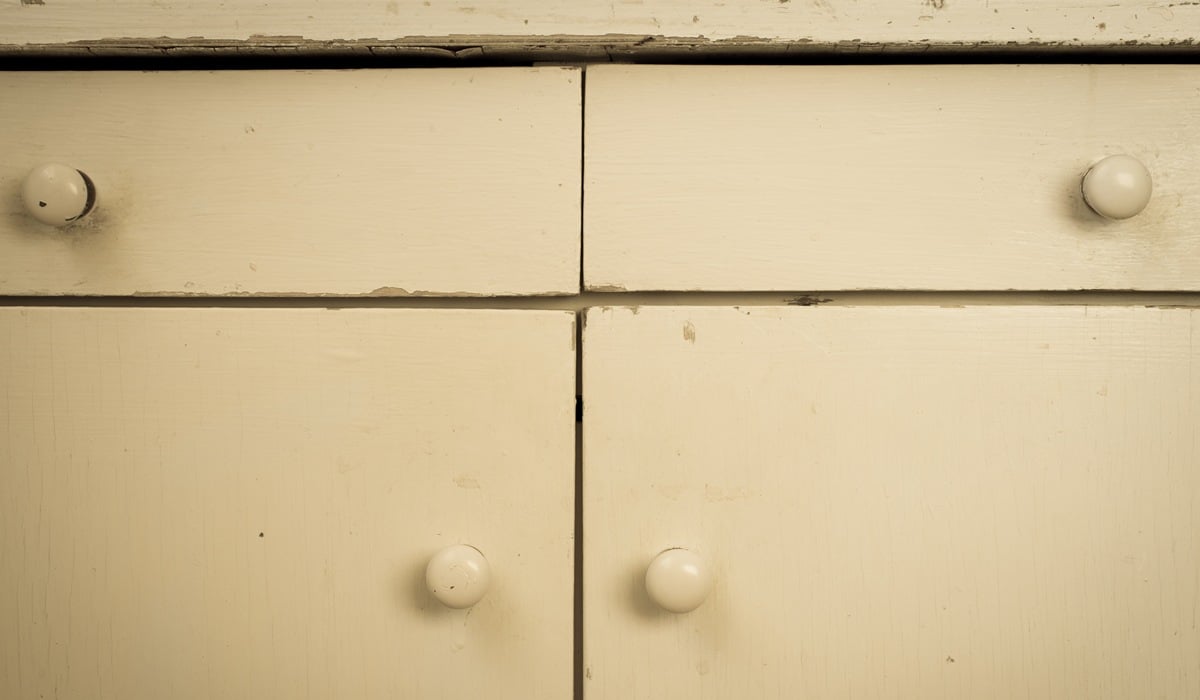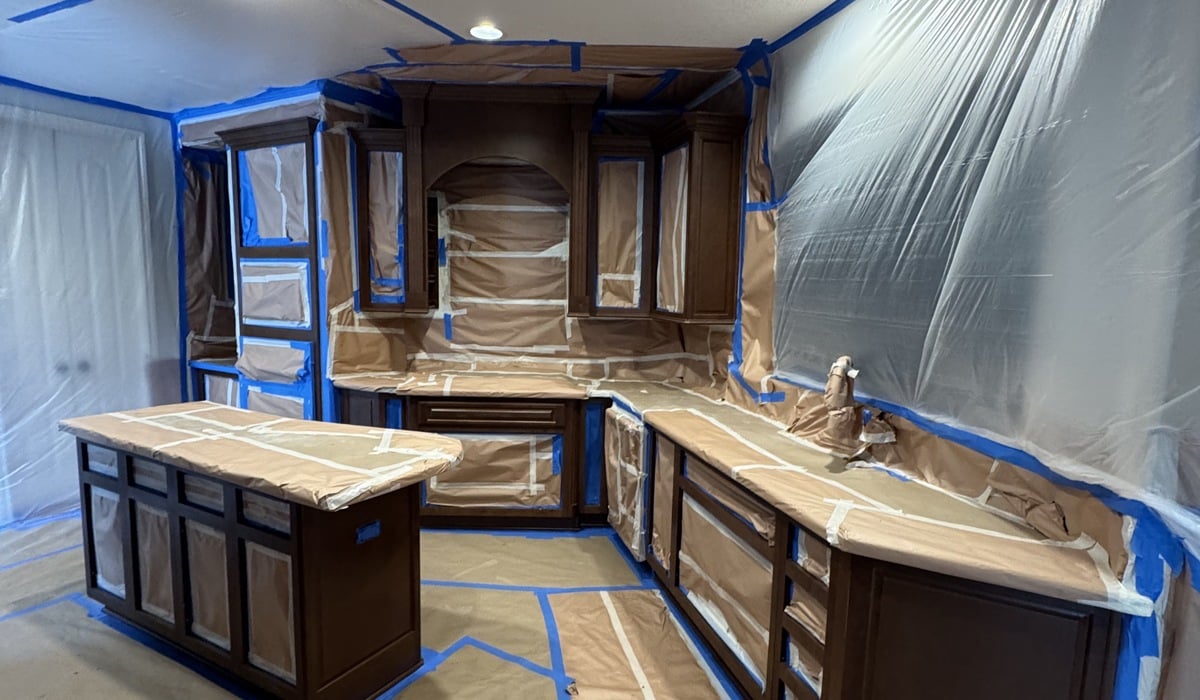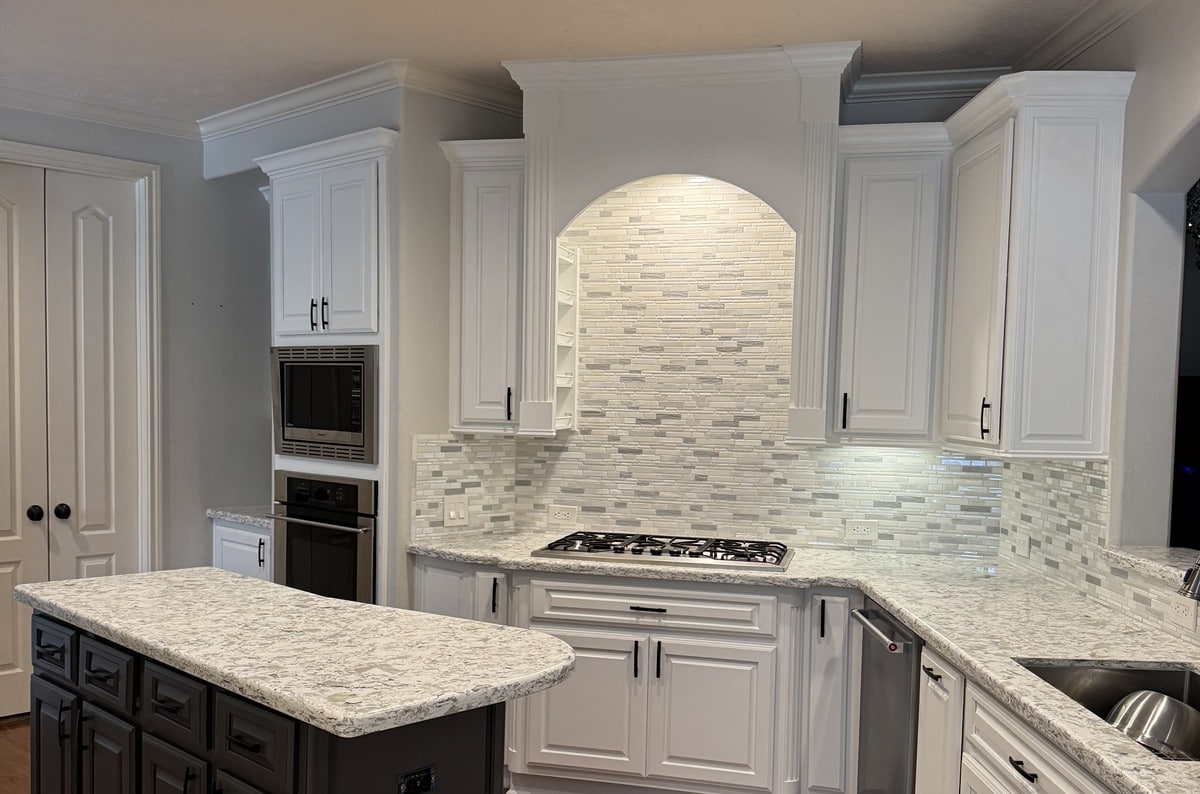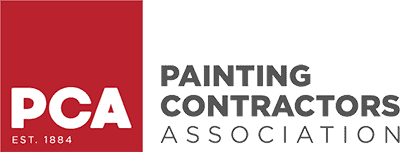Ever walk into your kitchen and notice the once-smooth paint on your cabinets is starting to peel, bubble, or crack? If you’re nodding your head, you’re in good company! Cabinet painters hear this complaint all the time — and yes, it’s frustrating. Peeling paint on kitchen cabinets isn’t just an eyesore; it’s a sign that something has gone wrong in the painting or maintenance process. And it can cost you big bucks if not handled correctly.
So, what’s behind the peeling? More importantly, how can you stop it from happening again?
Key Takeaways:

What Causes Peeling Paint on Kitchen Cabinets?
Let’s start with the root of the issue. There are a handful of common culprits that lead to peeling paint on kitchen cabinets:
1. Poor Surface Preparation
If the cabinet surface wasn’t cleaned, sanded, or primed correctly before painting, the paint simply won’t stick. Grease, old finish, or even dust can prevent proper adhesion.
2. Moisture and Humidity
Kitchens are naturally humid spaces. Without the right sealants or paint, moisture can sneak under the paint layer and cause it to bubble or peel.
3. Wrong Type of Paint
Not all paints are created equal. Using wall paint instead of cabinet-grade or enamel paint is a fast track to peeling. Paint meant for cabinets is formulated to withstand heavy use and moisture.
4. Skipping the Primer
Primer helps the paint bond to the surface. Skipping it — or using the wrong kind — reduces durability and leads to early paint failure.
5. Cheap Paint or Materials
Budget materials may look fine at first, but they often break down quickly under daily wear and tear.
6. Improper Application Techniques
Too many thick coats, not allowing enough dry time, or using low-quality brushes/rollers can result in uneven layers that eventually lift or crack.
How to Prevent Peeling Paint on Kitchen Cabinets
If you want cabinets that look fresh for years to come, prevention is key. Here’s how to avoid the pitfalls:
1. Clean Thoroughly Before Painting
Remove grease, dirt, and dust using a degreaser or TSP (trisodium phosphate). Even new cabinets need cleaning to remove factory residues.
2. Always Sand First
Sanding roughs up the surface so the primer and paint can adhere properly. Use 120-150 grit sandpaper for a clean finish.
3. Use a High-Quality Primer
Oil-based or shellac-based primers work best for cabinets. They create a tight bond between the surface and the paint.
4. Choose the Right Paint
Use cabinet-specific paint or alkyd enamel. These are made to resist chipping, peeling, and moisture.
5. Apply Thin, Even Coats
Resist the urge to glob it on. Multiple thin layers — with proper dry time between — are much more durable.
6. Seal with a Clear Topcoat
A polyurethane or polycrylic topcoat protects the paint from moisture and wear.
7. Hire Professional Cabinet Painters
Let’s face it. Painting cabinets well is harder than it looks. Professional cabinet painters have the right tools, materials, and techniques to get it done right the first time.

How to Fix Peeling Paint on Cabinets
Already dealing with peeling? Here’s how to tackle it:
1. Assess the Damage
If it’s just a small area, a touch-up might be enough. But if multiple doors or large surfaces are affected, you may need a full repaint.
2. Remove Loose Paint
Use a paint scraper or putty knife to gently remove all the peeling paint. Be careful not to gouge the wood.
3. Sand the Surface Smooth
Feather the edges where the paint peeled off so there are no hard lines.
4. Prime Bare Spots
Always re-prime any exposed wood to ensure proper adhesion.
5. Repaint with Care
Use high-quality cabinet paint and follow the thin-coat rule. Don’t rush the process.
6. Consider a Full Refinish
If the cabinets are old or the damage is extensive, a full strip-down and repaint might be the best option. That’s when calling in pro cabinet painters really pays off.

Signs You Should Hire a Professional
Not every homeowner has the time, patience, or skill to repaint cabinets properly. Here’s when it’s time to call in the experts:
Professional cabinet painters know how to do the job right — from prep to finish — and often provide warranties on their work.
Long-Term Care Tips for Painted Cabinets
Prevention doesn’t stop once the job is done. Here’s how to maintain your beautifully painted cabinets:
Final Thoughts
Peeling paint on kitchen cabinets doesn’t have to spell disaster. With the right prep, materials, and maintenance — or by hiring experienced cabinet painters — you can enjoy a smooth, long-lasting finish that adds beauty and value to your home.
Got peeling cabinets or want to avoid problems down the road? Contact Rise and Prime Painting today at 832-220-1848 for expert cabinet painting services that last.

